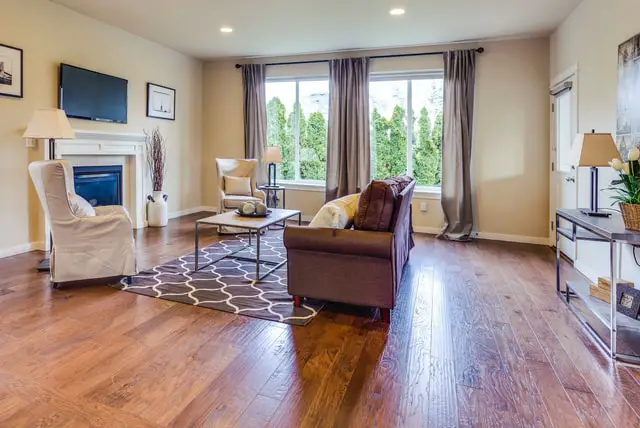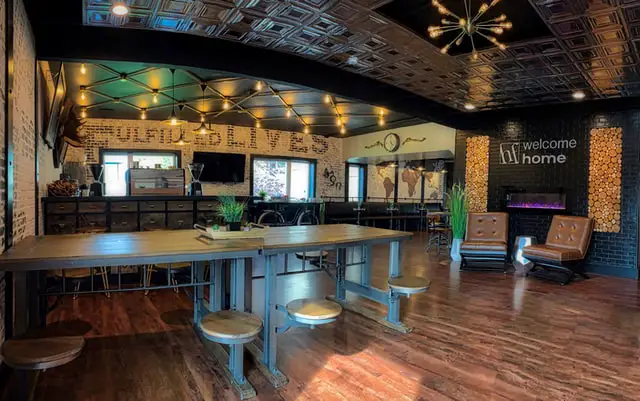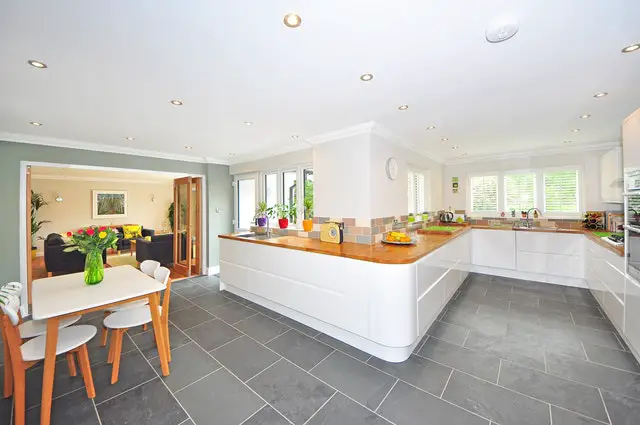Carpet flooring looks great when it’s installed correctly. The good news is that carpet comes in wide widths that often span the room. Therefore, you won’t usually end up with too many seams. But even one visible seam can be unsightly. Carpet seams become even more of a problem if you’re patching an area. Learn how to hide carpet seams so that your carpet looks great for as long as possible.
Should Carpet Seams Be Visible?
When you patch a carpet or extend a carpet from room to room, you’re bound to have seams. The seam is the area where two pieces of carpet butt up to each other. In general, these seams should not be evident to the naked eye.
Some disadvantages of visible carpet seams include the following:
- Distract from the focal point of the room
- Attract dirt and dust
- Risk of fraying
- May lead to bare stripes or spots
- Discoloration at the seam edges
- Creates seam shadows in direct light
High-pile carpets are better at hiding seams than smoother, low-pile carpets. But installation also plays a major role. If you want to minimize the appearance of carpet seams or repair existing problems with visible seams, keep reading.
Why Are Your Carpet Seams Visible?
The methods for how to hide carpet seams depend on the reasons that the seams are visible. Are your carpet seams visible due to one of the following problems?
Carpet Backing Delamination
Carpets have two layers of backing material:
- Primary back – A grid-shaped layer through which the fibers of the yarn are tufted
- Secondary back – The layer you see on the underside of your carpet
The secondary back is typically made from jute or polypropylene. It often has grid-like pattern that provides stability for the carpet. This layer is laminated to the primary back, creating a solid piece of carpet with tufting that goes all the way to the edge.
Sometimes, the secondary backing starts to delaminate at the edges of the carpet roll. This doesn’t create a noticeable effect on the front of the rug. However, carpet that comes from the manufacturer this way should not be used as is.
If the secondary back is loose, it will eventually create visible seams. Your carpet may also become threadbare along those lines.
How to Fix It: In serious cases, contact the manufacturer for a replacement. Delamination at the edges often has to do with quality issues. If the problem is not severe, you may be able to bond the layers together using seam adhesive.
Unraveling Seams
If the seams are unraveling, you’ll often notice long strands of plastic-like material extending from the rug. You may even start to see tufts of fibers lying on the surface of the carpet.
Fraying seams are usually caused by faulty installation. Either the carpet wasn’t cut correctly, or it wasn’t installed using a sealing iron. Over time, if the seam wasn’t installed correctly, wear and tear can make the edges of the carpet begin to fray.
How to Fix It: To prevent carpet seams from unraveling, cut the carpet between the rows of tufted fibers instead of through the tufts before installation. Pressing a sealing iron against the edges of the carpet will melt the material enough to prevent any tufts from escaping. Go over the edges twice and press firmly to safeguard against this problem.
If the seams in your carpet are already unraveling, trim them down before the problem gets worse. Use sharp scissors to snip the frayed edges to the same height as the carpet pile. Don’t pull on these strands as you cut them.
For severe fraying, try using carpet adhesive or a small amount of hot glue on the seam. Start by separating the carpet fibers and keeping them away from the seam with masking tape. Then, apply a small amount of adhesive deep into the seam. Use your fingers to twist sections of existing carpet upright, hiding the threadbare spot.
Peaking Seams
Peaking seams occur when pressure on either side of the seam makes the cut edge protrude upward. This creates visible lines wherever it happens. It’s usually caused by stretching a carpet too tightly or using a carpet iron that’s too hot.
How to Fix It: You can avoid seam peaking by gluing down the carpet or pre-stretching it. Attach the carpet seam tape to connect two pieces of rug together while it is in the pre-stretch stage. Wait for the adhesive to cool before releasing it from the stretch. Then, when you stretch it again for installation, it shouldn’t create a significant peak at the seam. Stretching the length of the seam tape harder than the surrounding carpet will also create a dip in the fabric, minimizing seam peaking.
If your carpet is already peaking at the seams, you can try to fix it using carpet seam tape. Pull up a section of carpet at the problematic seam. Lay the seam tape beneath it, using a carpet iron to secure the fibers to the tape and bond everything together.
Splitting Seams
Splitting seams occur when two sections of carpet pull away from each other, revealing the pad or flooring underneath. This is usually caused by foot traffic or dragging heavy furniture over the carpet.
How to Fix It: If your carpet is in good shape, you can often fix splitting seams using carpet or seam adhesive and a carpet iron. Use a seam roller or heavy weight to secure the carpet to the adhesive so that it bonds properly.
Tips for How to Hide Carpet Seams
You’re more likely to notice carpet seams than your guests. But if you want to improve the appearance of your carpet and keep it in good condition for a long time, you’ll want to use the following tips for how to hide carpet seams:
- Choose dark-colored carpet, which hides seams better than lighter shades.
- Line up patterns so that there is no visible distinction between sections of carpet.
- Apply a heavy weight when gluing down carpet seams; leave it there until the adhesive dries completely.
- Use a piece of plywood or another hard surface under the carpet when connecting two sections with seam tape. This creates a flatter base where the seams come together.
- Don’t install seams beneath windows or in areas where strong light will cast shadows on it.
- Make sure that your carpe iron is not too hot; extreme temperatures can cause discoloration and puckering.
- Protect your carpets against urine accidents. The ammonia in urine causes the secondary back to delaminate from the top layer; if this happens at the seams, it can cause them to become misshapen.
- Consider installing a type of carpet that hides seams better, such as shag or berber.
- Avoid moving furniture with casters along or across the seams of your carpet.
- Don’t saturate your carpet with water or cleaning products when removing stains.
- Use a syringe to inject carpet adhesive into tight spots beneath the fibers.
- When joining seams, bend the carpet upwards so that the backing comes together before the top of the pile.
- Have someone help you hold back the carpet sections while applying new tape beneath the seam.
- Stretch the carpet parallel to the seams.
- Glue carpet tiles directly to the floor for best results.
When you take care of your carpet seams, you’ll reduce the risk of falls and get the most life out of your carpet. Fix problematic seams as soon as possible. Failing to do so can make the problem worse.





